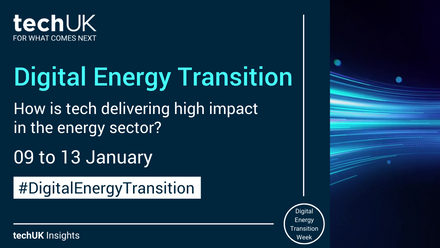Government Office for Science publishes Wireless 2030 report
The Government Office for Science has published its Wireless 2030 report, examining four possible scenarios for the future of wireless connectivity in the UK.
The report follows detailed consultation and discussion around its themes, taking a wide view of the impact wireless connectivity has on society and the economy, and is both an important precursor to the upcoming Wireless Infrastructure Strategy and part of the evidence submitted.
By creating four scenarios of possible futures for UK wireless by 2030, GO-Science has attempted to understand how a variety of areas, from culture to transport, will be affected by the supply of, and demand for, wireless connectivity to support digital solutions.
The four scenarios and their construction
Each scenario is dictated by how much demand there is for the technology enabled by wireless connectivity, and the ability for innovation to support that demand.
The first major ‘axis’ in each scenario is the pace of innovation, which refers to both the design and implementation of digital technologies and connectivity infrastructure. The report predicts that technologies such as VR entertainment will, even if only receiving a low take-up, require significant bandwidth to work effectively.
The other axis reflects the willingness of enterprises, government, and individuals to be interested in digital solutions, to become digitally literate, and be willing to invest time as well as money into a digital future. GO-Science sees this demand side as “essential" for ensuring the supply provided by technical innovation is utilised.
The report also outlines five key themes that it is believed will most affect the rate of technological innovation and encourage public involvement and investment in digital connectivity. These are:
- The Governance agenda
- Public perception
- Network design
- Sustainability and resources
- The ability to store and exchange value digitally
The four scenarios thus represent a combination of these two axes based on how the key themes have played out.
Influencing the field
The report makes no specific recommendations, but does have several areas believed to be important for consideration going forward. These include the need for government and service providers to engage to promote network utilisation, with the possibility of using public services as a demand lever being highlighted by the report. This was discussed at techUK’s launch of the FTIR: Fit to Deliver for 5G and Full Fibre report, with the adoption of 5G and full-fibre connectivity and use cases by public services cited to not just improve their own connectivity, but to signal demand in the private sector too.
Other considerations include the need to protect infrastructure and secure resilience, which was recently discussed by the Joint Committee on the National Security Strategy. Furthermore, GO-Science higlight the need to remain vigilant regarding the health impacts of a highly digital world, due to the increased time spent indoors and looking at screens.
In a wider sense, the report is a framework for how policymakers may want to think through the impacts of potential policies on the digital sector. These include potential government policy initiatives, but also policy reactions to harmful external shocks.
The report also outlines how the field of digital connectivity affects virtually every sphere of existence, both now and in future. Digital healthcare, one field the report examines, will depend not just on public investment in digital solutions such as remote monitoring, but the ability of networks to supply the bandwidth to support these systems, as well as the confidence of patients that remote monitoring will provide a high standard of care. Similarly, advances in Connected and Autonomous Vehicles and micromobility will only be possible if there is a suitable supply of network bandwidth and coverage, a willingness to support digital transport solutions to commercial viability, and a sufficient interest in and demand for these solutions amongst the public. If both supply and demand can be encouraged, then there is the potential for mass adoption of exciting digital technologies.
The report does not predict how digital Britain will look by 2030. It does, however, show a bright future is possible. The Government’s upcoming Wireless Infrastructure Strategy, and recent commitment to rural connectivity, shows that movement is heading in the right direction.
Exploring the Potential of Future Telecoms
Visit our Future Telecoms Hub to learn more or to register for regular updates.
Future Telecoms is techUK’s exploration of what the connectivity of tomorrow will look like. We will highlight the criticality of communications to our future prosperity and economic growth, and how the future telecoms ecosystem acts as the engine of innovation. Visit our Future Telecoms Hub to learn more or to register for regular updates.
Upcoming Future Telecoms events
Latest news and insights
Telecoms updates
Sign-up to get the latest updates and opportunities from our Communications Infrastructure and Services programme.
Contact the team
Learn more about our Future Telecoms campaign

















